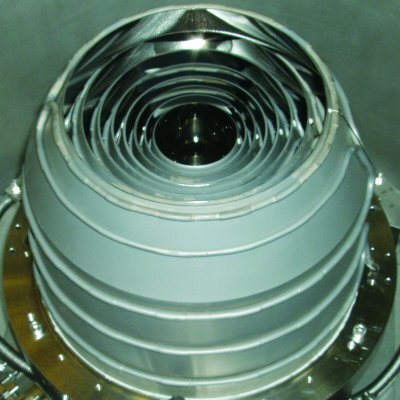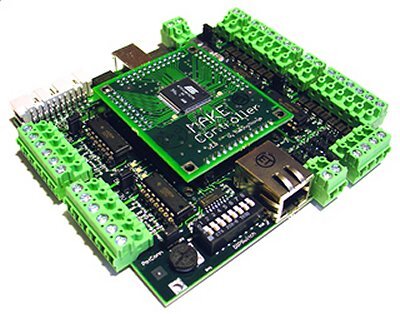Faster, cheaper chips from space technology
Our world is full of integrated semiconductor circuits, commonly known as microchips. Today you find them in computers, cars, mobile phones and in almost every electrical device. Technology from ESA’s XMM-Newton space telescope will make these chips much smaller, faster and cheaper.
The circuits are etched into today’s microchips by ultraviolet light.
The demand for faster and more powerful chips requires the use of extreme ultraviolet (EUV). Much smaller semiconductor circuits can be produced, leading to microchips up to 100 times faster and to memory chips with up to 100 times more storage capacity .

However, conventional lenses cannot focus EUV rays. Instead, special ‘grazing-incidence mirrors’ must be used, and it is here that space technology comes in.
Italian company Media Lario Technologies has developed grazing-incidence mirrors to make chips by extending the technology originally used for producing the advanced telescope mirrors for Europe’s XMM-Newton X-ray observatory.
Space telescope produced by highly accurate electroforming technology

Since 1999, XMM-Newton’s telescope has been delivering stunning X-ray images of our Universe.
This is above all due to its exceptional mirrors – the most sensitive ever developed – which total 200 sq m covered by ultra-smooth gold. Statistically, no gold atoms stick out from the surface by more than their own size.

Media Lario was selected in 1995 to develop these remarkable mirrors. They had to optimise and improve their electroforming and production technology to deliver the mirror modules with the outstanding performance required by ESA.
By completing this “almost impossible mission” in 1998, as the then ESA Director of Science, Prof. Roger Bonnet, described it some years earlier, Media Lario was recognised worldwide for the company’s leading-edge nickel electroforming replication technology.
XMM Newton technology spinoff produces faster chips

“After the successful production of the X-ray telescope for ESA’s XMM-Newton spacecraft, Media Lario continued to extend the technology and searched for advanced applications and markets for this unique capability,” explains Giovanni Nocerino, Media Lario President and CEO.
“Advanced EUV lithography for chip production needed an efficient mechanism for collecting and transporting the EUV light. A unique Media Lario design, which is the ‘microscope’ configuration of the space telescope, turned out to be an ideal solution for the EUV collector problem for lithography.”

“The great news is that the semiconductor equipment industry, and consequently semiconductor devices, are making a significant transition to EUV lithography and Media Lario's gracing incidence collector mirror is a key-enabling subsystem of this transition.”
The EUV collector mirrors for semiconductor lithography are based on the original investment in the technologies and competences needed for XMM-Newton. Highly reflective thin optical mirrors (0.4 mm to 1 mm) can now be produced, with ultra-smooth surfaces having a roughness of less than 0.4 nm which is like a 250-thousandth the width of an average human hair.

Within the next year, equipment with Media Lario’s EUV mirrors is planned to enter pre-production, prior to being used in mass chip manufacturing.
“Media Lario is now the principal developer of such EUV collector mirrors and we are working with Nikon, Canon and ASML, the world’s leading providers of lithography systems for the semiconductor industry,” says Giovanni Nocerino.
According to Frank M. Salzgeber, Head of ESA's Technology Transfer Programme Office, “this is a great example of how a science mission generates leading-edge technology, which is then used for the benefit of daily applications on Earth.”
The European space industry has built up an impressive portfolio of technologies and knowhow. Since 1991, ESA’s Technology Transfer Programme, with its European-wide network of technology brokers, has promoted the use of these technologies beyond space systems. This has provided many innovative solutions for non-space products and services that improve our daily lives.
ESA’s Technology Transfer Programme Office (TTPO)
The main mission of the TTPO is to facilitate the use of space technology and space systems for non-space applications and to demonstrate the benefit of the European space programme to European citizens. The office is responsible for defining the overall approach and strategy for the transfer of space technologies, including the incubation of start-up companies and their funding. For more information, please contact:
ESA’s Technology Transfer Programme Office
European Space Agency ESA
Keplerlaan 1, 2200 AG, Noordwijk ZH
The Netherlands
Tel: +31 (0) 71 565 6208
Email: ttp @ esa.int
Website: http://www.esa.int/ttp






